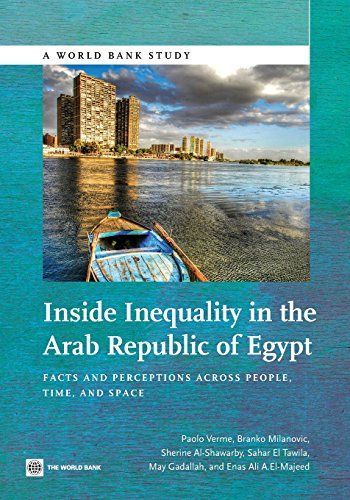
Inside Inequality in the Arab Republic of Egypt Facts and Perceptions Across People, Time, and Space
Inside Inequality in the Arab Republic of Egypt: Facts and Perceptions Across People, Time, and Space comprises four papers prepared in the framework of the Egypt inequality study financed by the World Bank. The first paper, by Sherine Al-Shawarby, reviews the studies on inequality in Egypt since the 1950s with the double objective of illustrating the importance attributed to inequality through time and of presenting and comparing the main published statistics on inequality. The second paper, by Branko Milanovic, turns to the global and spatial dimensions of inequality. The Egyptian society remains deeply divided across space and in terms of welfare, and this study unveils some of the hidden features of this inequality. The third paper, by Paolo Verme, studies facts and perceptions of inequality during the 2000-2009 period, which preceded the Egyptian revolution. The fourth paper, by Sahar El Tawila, May Gadallah, and Enas Ali A.El-Majeed, assesses the state of poverty and inequality among the poorest villages of Egypt. The paper attempts to explain the level of inequality in an effort to disentangle those factors that derive from household abilities from those factors that derive from local opportunities. Inside Inequality in the Arab Republic of Egypt provides some initial elements that could explain the apparent mismatch between inequality measured with household surveys and inequality aversion measured by values surveys. This is a particularly important and timely topic to address in light of the unfolding developments in the Arab region. The book should be of interest to any observer of the political and economic evolution of the Arab region in the past few years and to poverty and inequality specialists interested in a deeper understanding of the distribution of incomes in Egypt and other countries in the Middle East and North Africa region.